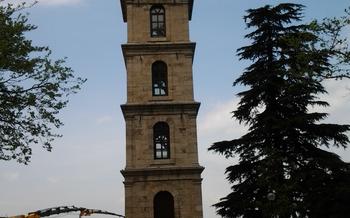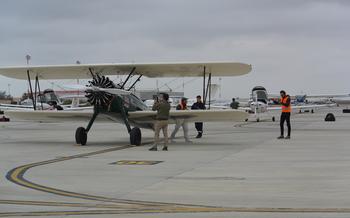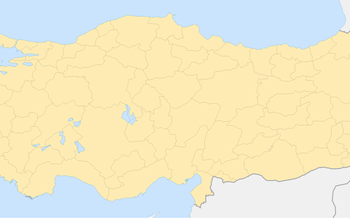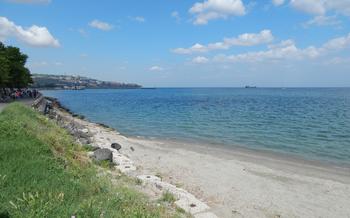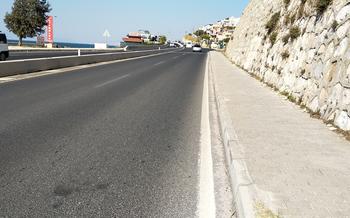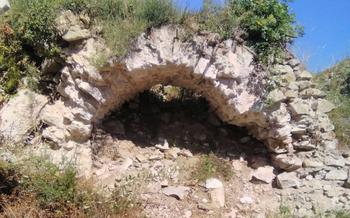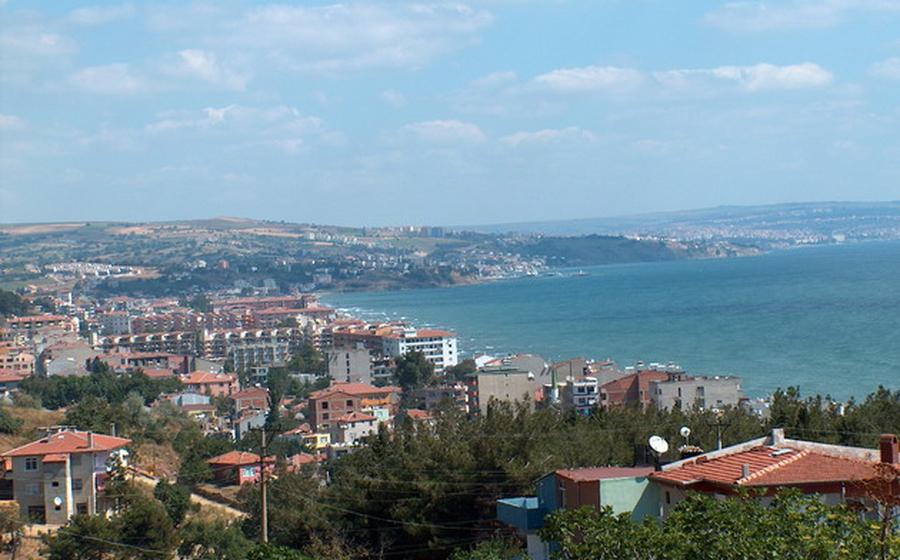
Marmara Ereğlisi Roman Ruins
- Marmara Ereğlisi Roman Ruins: A Journey Through History
- Historical Background
- Architectural Significance
- Cultural Importance
- Archaeological Discoveries
- Must-See Sites Within the Ruins
- Tips for a Memorable Visit
- Transportation to Marmara Ereğlisi
- Exploring the Town of Marmara Ereğlisi
- Historical Context of the Roman Ruins
- Architectural Highlights of the Theater
- Unique Features of the Gymnasium
- The Baths: A Symbol of Roman Luxury
- Bathing Rituals
- Hot, Warm, and Cold Baths
- Hypocaust System
- Archaeological Discoveries at the Ruins
- Budget-Friendly Tips for Visiting the Ruins
- Tips for Photography Enthusiasts
- Family-Friendly Activities at the Ruins
- Events and Festivals in Marmara Ereğlisi
- Insider Tip: Hidden Gem
Marmara Ereğlisi Roman Ruins: A Journey Through History
In the charming town of Marmara Ereğlisi, nestled along the Sea of Marmara, lies a treasure trove of ancient history waiting to be explored: the Marmara Ereğlisi Roman Ruins. These ruins, remnants of a once-thriving Roman city known as Heraclea, offer a captivating glimpse into the grandeur and sophistication of the Roman Empire.
Historical Background
Heraclea, founded in the 6th century BC by Megarian colonists, played a pivotal role in the region's maritime trade and commerce. It flourished under Roman rule, becoming an important port and administrative center. The city's strategic location, coupled with its natural harbor, made it a vital hub for trade and communication between the East and the West.
Architectural Significance
The Marmara Ereğlisi Roman Ruins showcase impressive architectural feats that reflect the engineering prowess of the Romans. Visitors can marvel at the well-preserved remains of a theater, gymnasium, baths, and agora, each offering unique insights into the urban planning and lifestyle of the Roman period.
Cultural Importance
The ruins hold immense cultural significance, as they provide tangible evidence of the Roman Empire's profound influence on the region. The theater, with its intricate acoustics, hosted theatrical performances, musical events, and public gatherings, serving as a cultural and entertainment center for the city's inhabitants.
Archaeological Discoveries
Archaeological excavations at the site have unearthed a wealth of artifacts, including pottery, coins, sculptures, inscriptions, and mosaics. These findings have shed light on the daily lives, customs, and beliefs of the Roman citizens who once called Heraclea home, providing valuable insights into the social and cultural fabric of the ancient city.
Must-See Sites Within the Ruins
Agora: The Vibrant Marketplace and Social Hub
Step into the bustling heart of ancient Marmara Ereğlisi as you explore the Agora, the city's central marketplace and social hub. Imagine the lively atmosphere as merchants displayed their wares, shoppers haggled for the best prices, and locals gathered to exchange news and gossip. The Agora served as a crucial meeting point, where trade, commerce, and social interactions flourished.
Theater: Witnessing Grandeur and Spectacle
Marvel at the magnificent Roman theater, one of the best-preserved structures within the ruins. Constructed with precision and grandeur, the theater once hosted a variety of performances, from theatrical plays and musical concerts to gladiatorial contests. Take a seat in the well-preserved auditorium and let your imagination transport you back in time as you envision the spectacle that unfolded on stage.
Gymnasium: Where Romans Trained and Socialized
Discover the ancient gymnasium, a place dedicated to physical fitness, education, and social interaction. Romans frequented this complex to engage in various sports and athletic activities, including wrestling, running, and discus throwing. Beyond physical training, the gymnasium also served as a center for intellectual pursuits, with philosophers and scholars gathering to share knowledge and ideas.
Baths: Unveiling the Elaborate Bathing Culture
Immerse yourself in the bathing culture of the Roman Empire as you explore the well-preserved baths. Step into the caldarium, the hot bath, and feel the warmth envelop your body. Move on to the tepidarium, the warm bath, and experience a gradual transition in temperature. Finally, enter the frigidarium, the cold bath, for a refreshing plunge. Admire the intricate mosaic floors and frescoes that adorned the bathing areas, reflecting the Romans' appreciation for art and aesthetics.
Tips for a Memorable Visit
To make the most of your visit to the Marmara Ereğlisi Roman Ruins, consider these practical tips:
-
Guided Tours: Enhance your experience by joining a guided tour led by knowledgeable experts. These tours provide valuable insights into the history and significance of the ruins, helping you appreciate them on a deeper level.
-
Comfortable Footwear: The ruins involve walking on uneven surfaces, so comfortable shoes are essential. Avoid high heels or sandals that can make walking difficult or hazardous.
-
Sun Protection: The Turkish sun can be intense, especially during the summer months. Bring sunscreen, sunglasses, and a hat to protect yourself from the sun's harmful rays.
-
Photography Opportunities: The picturesque ruins and intricate architectural details offer numerous photo opportunities. Bring your camera to capture the beauty of the site and create lasting memories of your visit.
Transportation to Marmara Ereğlisi
Public Transportation:
For a convenient and budget-friendly option, utilize the local public transportation system to reach Marmara Ereğlisi. Buses and trains offer regular service to the town from major cities in Turkey, including Istanbul and Bursa. Once in Marmara Ereğlisi, you can easily walk to the Roman ruins, as they are located in the heart of the town.
Driving Directions:
If you prefer the flexibility of driving, follow these detailed directions to navigate to the Marmara Ereğlisi Roman Ruins:
- Start from Istanbul and take the O-7 highway towards Tekirdağ.
- Continue on the O-7 highway until you reach the Tekirdağ exit.
- Take the Tekirdağ exit and follow the signs to Marmara Ereğlisi.
- Once in Marmara Ereğlisi, follow the signs to the Roman ruins, which are located near the town center.
Parking Availability:
Finding parking near the Marmara Ereğlisi Roman Ruins is generally not an issue. There are several designated parking areas within walking distance of the ruins. These parking areas are usually free of charge and offer ample space for visitors.
Exploring the Town of Marmara Ereğlisi
Marmara Ereğlisi, beyond its ancient ruins, offers a delightful blend of history, culture, and natural beauty. Immerse yourself in the town's vibrant atmosphere as you explore its charming streets and hidden gems.
Indulge in the local cuisine, which boasts fresh seafood caught from the Sea of Marmara. Savor traditional Turkish dishes prepared with local ingredients, tantalizing your taste buds with every bite.
Discover unique souvenirs and local crafts in the town's charming shops. Find handmade pottery, intricate textiles, and traditional Turkish delights that make for perfect mementos of your visit.
Take advantage of the nearby beaches to enjoy swimming, sunbathing, and water sports. Bask in the Mediterranean sunshine as you relax on the sandy shores or dive into the crystal-clear waters for a refreshing swim.
Choose from a variety of hotels and guesthouses that cater to different budgets and preferences. Whether you seek a luxurious beachfront resort or a cozy family-run guesthouse, Marmara Ereğlisi offers comfortable accommodations to ensure a memorable stay.
Historical Context of the Roman Ruins
The town of Marmara Ereğlisi, where the Roman ruins are located, has a rich and storied history. Originally founded as the ancient city of Heraclea in the 6th century BC, it quickly rose to prominence as a major port city due to its strategic location on the Sea of Marmara. During the Roman conquest of the region in the 2nd century BC, Heraclea became an integral part of the empire, serving as a vital trading hub and naval base.
Under Roman rule, the city flourished and expanded, leaving behind the impressive ruins that can be seen today. The Roman Empire's influence on Marmara Ereğlisi is undeniable, with its architecture, infrastructure, and cultural legacy deeply intertwined with the town's identity. After the fall of the Roman Empire, the city continued to play a significant role during the Byzantine and Ottoman periods, further enriching its historical tapestry.
Architectural Highlights of the Theater
The theater in Marmara Ereğlisi stands out for its remarkable architectural features. Constructed in the 2nd century AD, it could accommodate up to 5,000 spectators. The seating arrangement showcases the social hierarchy of the Roman era, with the front rows reserved for VIPs and dignitaries. The stage and orchestra are particularly impressive, adorned with intricate carvings and sculptures that depict scenes from mythology and Roman life. The acoustics of the theater are exceptional, allowing actors' voices to carry throughout the audience, creating an immersive experience for spectators.
Unique Features of the Gymnasium
The gymnasium in Marmara Ereğlisi Roman Ruins was more than just a place for physical training. It served as a multifaceted social and cultural center for the Roman community. Beyond the sports facilities, the gymnasium offered ample space for gatherings, education, and cultural events.
-
Social and Cultural Center: The gymnasium was a hub for social interactions, where Romans from all walks of life could socialize, exchange ideas, and foster a sense of community. It provided a welcoming environment for people to connect, relax, and unwind after a day's work or training.
-
Mosaics and Frescoes: The gymnasium's walls and floors were adorned with exquisite mosaics and frescoes that showcased the artistic prowess of the Roman era. These intricate artworks depicted mythological scenes, geometric patterns, and scenes from daily life, offering a glimpse into the Roman imagination and artistic expression.
The Baths: A Symbol of Roman Luxury
The Marmara Ereğlisi Roman Ruins offer a glimpse into the elaborate bathing culture of the Roman Empire. The well-preserved baths are a testament to the Romans' dedication to hygiene and luxury.
Bathing Rituals
For the Romans, bathing was not merely a means of cleansing but also a social and cultural activity. Public baths, known as thermae, were an integral part of Roman life and served as places for relaxation, socializing, and even conducting business.
Hot, Warm, and Cold Baths
The baths were typically divided into three sections: the caldarium (hot bath), the tepidarium (warm bath), and the frigidarium (cold bath). Bathers would start in the caldarium, where they would sweat and cleanse their bodies. They would then move to the tepidarium to cool down before finally immersing themselves in the frigidarium to close their pores.
Hypocaust System
One of the most impressive features of the Roman baths was the hypocaust system, which provided underfloor heating. The system consisted of a network of channels beneath the floor that circulated hot air from a furnace. This innovative technology allowed the Romans to maintain a comfortable temperature in the baths, even during the winter months.
Archaeological Discoveries at the Ruins
Excavations at the Marmara Ereğlisi Roman Ruins have yielded a treasure trove of archaeological discoveries that provide valuable insights into the daily life and culture of the Roman period. Among the most notable finds are exquisite Roman artifacts, such as pottery, coins, and sculptures, which offer glimpses into the artistic and craftsmanship of the era.
Inscriptions and mosaics unearthed at the site have also proven to be invaluable sources of information. These inscriptions, often etched in stone, provide historical records, names of prominent figures, and details about the city's administration and governance. Mosaics, with their intricate designs and vibrant colors, depict mythological scenes and everyday life, offering a visual narrative of Roman culture.
Ongoing archaeological research and conservation efforts continue to shed light on the history of Marmara Ereğlisi. Excavations are meticulously conducted, ensuring the preservation of the ruins while uncovering new artifacts and information. These ongoing efforts contribute to our understanding of the Roman Empire and its lasting impact on the region.
Budget-Friendly Tips for Visiting the Ruins
Visiting the Marmara Ereğlisi Roman Ruins is an enriching and affordable experience. Take advantage of the free admission, which allows you to explore the ruins at your own pace without any entrance fees. Save money on food by packing a delicious picnic lunch to enjoy amidst the ancient structures. Plan your visit during the shoulder season (April-May and September-October) or off-season (November-March) to avoid the crowds and potentially find better deals on accommodations. These budget-friendly tips will allow you to fully immerse yourself in the history and beauty of the ruins without breaking the bank.
Tips for Photography Enthusiasts
As a photography enthusiast, you'll find Marmara Ereğlisi Roman Ruins a treasure trove of captivating subjects. To make the most of your visit, plan your trip during the golden hours of sunrise or sunset to capture stunning photographs with warm, diffused light. This soft, natural light will enhance the textures and colors of the ruins, creating a magical atmosphere.
Bring a tripod and a wide-angle lens to capture expansive shots of the ruins. The tripod will help you achieve sharp images, especially in low-light conditions, while the wide-angle lens will allow you to fit more of the ruins into your frame. Experiment with different perspectives and angles to create unique and captivating images. Try shooting from a low angle to emphasize the grandeur of the structures, or climb to a higher vantage point for a bird's-eye view.
Family-Friendly Activities at the Ruins
Visiting the Marmara Ereğlisi Roman Ruins with children can be a delightful and educational experience. To make the most of your family visit, consider these engaging activities:
Interactive Workshops: Participate in interactive workshops designed specifically for children. These workshops often focus on hands-on activities that introduce Roman history, culture, and daily life in a fun and interactive way. Kids can learn about Roman art, create their own mosaics, or dress up in traditional Roman clothing.
Storytelling Sessions: Storytelling sessions bring the ruins to life for young visitors. Professional storytellers or guides narrate tales of Roman mythology, legends, and historical events, capturing children's imaginations and transporting them back in time.
Scavenger Hunts: Organize a scavenger hunt to engage children in a fun and educational exploration of the ruins. Create a list of clues related to Roman history or architecture and have children search for specific features or artifacts. This activity encourages exploration, observation, and teamwork.
Events and Festivals in Marmara Ereğlisi
Marmara Ereğlisi is not only known for its historical ruins but also for its vibrant cultural scene. Throughout the year, the town hosts various events and festivals that celebrate local culture and traditions, providing visitors with a unique opportunity to immerse themselves in the rich heritage of the region.
One of the highlights is the annual Marmara Ereğlisi Festival, held during the summer months. This lively festival showcases local music, dance, and traditional crafts, offering a glimpse into the town's rich cultural heritage. Visitors can enjoy live performances, participate in workshops, and savor delicious local cuisine at food stalls.
Another popular event is the Theater Festival, which takes place at the ancient theater during the summer months. This festival features an array of theater performances, concerts, and cultural events, providing a unique backdrop for a memorable evening under the stars.
For history enthusiasts, the Historical Reenactment Festival is a must-see. This festival brings the Roman era back to life with authentic costumes, demonstrations, and performances that showcase the daily life and customs of the ancient Romans. Visitors can witness gladiator fights, chariot races, and other historical reenactments that offer a glimpse into the past.
Insider Tip: Hidden Gem
As you explore the ruins of Marmara Ereğlisi, keep an eye out for a hidden gem – a secret mosaic that lies tucked away, waiting to be discovered. This beautifully preserved mosaic depicts a captivating mythological scene, transporting you back to the days of ancient storytelling. With its intricate details and vibrant colors, this hidden treasure offers a glimpse into the rich artistic heritage of the Roman era. Be sure to ask your guide or do some research to find out the exact location of this hidden gem, and make sure to capture a photo of this remarkable piece of history.



